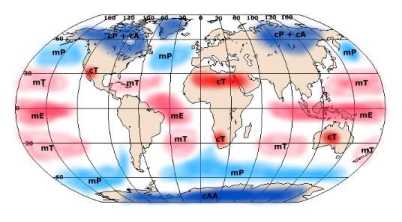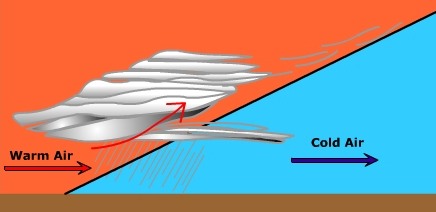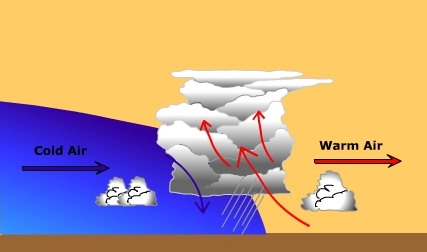Chapter Review

mP air masses are cool and moist forming over oceans at about 60o N and S.
cP air masses are cold and dry forming over continents at about 60o N.
mT air masses are warm and moist air masses forming over oceans at about 30o N and S.
cT air are warm and dry air masses forming over continents at about 30o N and S.


Cumulus stage: Creation of a cumulus cloud by updrafts of warm, moist air
Mature stage: Updrafts of warm moist air fuels the developing storm. Downdrafts of cold dry air is created by precipitation entrainment.
Decay stage: Downdrafts predominate as uplift of warm moist air ceases.
